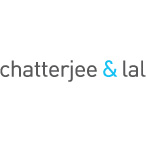C&L Shows
Different Danny and Other Stories
Amshu Chukki
2022

Overview
Behind the cinematic image are invisible processes of divination – bodies and apparatus that converge to form combinations and contraptions for production. Several practices and objects associated with cinema are often identified using terminology only understood by those in the filmmaking fraternity. This invisibility is both violence and possibility to those it envelopes. In Different Danny and Other Stories, Amshu Chukki foregrounds these skills, devices, and conditions to conjure an atmosphere that complicates labour and its relationship to the architecture of cinema and the city.
A dupe is a stunt double for an actor – a body that is called to deliver difficult choreography under looming danger. Being a dupe is also a call to thrill, and thereby entertainment. Danny – the protagonist of Chukki’s film – describes a walk along a stream and through a thicket that eventually opens up to a waterfall. In a moment of hesitation and confusion, Danny jumps off the cliff for a shot. A sense of duty is tied to this act (although it might of be applauded as an act of courage). The film industry employs thousands, each hailing from across diverse social backgrounds and skillsets, re-classifying them to uphold a system of hierarchies tied into notions such as respect and duty. With the complete closure of filming due to the pandemic, not being able to perform this duty left Danny in a state of anxiety. Here, a third kind of suspended time takes over. Recollections and choreographies for the future become devices to navigate and contend with this new time. Chukki’s camera meanders. It captures, on one hand, the atmosphere and apparatus of cinema: men handling equipment, cameras, rain curtains, tarp, and lights. On the other, it captures the city in a state of interruption. Danny notes how the city itself becomes a tool for imagining stunts; how it is the ultimate inspiration and set. Under-construction or abandoned buildings, flyovers, factories – assets that once represented the city’s development and/or its possible futures – become mere surfaces for choreographies with bodies. These impulses spill out from the video into the gallery space.
To jump, to leap in space, becomes both a device and a metaphor to physically destabilize points of view. Like a hypnotizing act, it trains our vision to maneuver space with the body as it turns. It takes our attention away from the imposing city and draws us instead to its otherwise insignificant, tiny occupants. In Study for a Jumping Sequence, Chukki toys with this proposition. We see a stationary body stretched into a leaping curve, set into motion by a rotating surface. Close to the jump is a series of delicate sculptures titled Recce – a term that originates from military inspection and described the process of scouting potential shoot locations and their needs and conditions. Here, silhouettes of bodies are layered onto wireframes of flyovers, buildings, and pillars. The body is seemingly in motion, using a stop-motion-like technique to suggest action.
In Shooting Mane, a two-channel video work, Chukki foregrounds the house and the many characters it plays as a shoot location. Its permanence as home to a family is juxtaposed against its life as an ever-changing set (a dupe). Like the body of the stuntman, the architecture of the house also extends spatially and in terms of its identity. Sometimes many houses exist within this one house simultaneously. As we witness the transformation of these spaces during a production, families and film staff talk about possession and freedoms, control and commodification, reality and suggestions, aspirations, temporality, and the temporary. These houses and their contents also stand as witnesses to two parallel times: the real and the cinematic. Hours of work are reduced to a few seconds of footage and the only measure of time and labour is the fatigue of the body and the movement of props.
States of suspension and ideas of care are represented by cords with Carabiner hooks: safety gear also used to append and fasten. The cords recur through Chukki’s works. In the installations Dupe, Appendage and Suspension, they extend in two directions from jackets installed on the wall and find their termination anchored to the floor (at one end is a building and at the other a leg, both strained and twisted like in a leap).
In Chukki’s work – like in films – the image is first encountered in words. Vivid descriptions surrender themselves to the imagination of each receiver. Everyone perceives the scene distinctly in their minds, even though the settings and dialogues are more or less the same. This is the beauty and violence of absences. The mind is reliant on ready, processed images and seeks to consume without context, without regard for process and labour. This delay between word and image can be read as a suspension.
Here, props, stands, temporary sets, and stretchable bodies enmesh with desire, demand, and danger to come to terms with the inevitability of adjustment and change. Either through mimicking or challenging the natural, conditions such as temperature, season, and light are either resisted or required. Through film, installations and paintings, Chukki delves into cinematic time through and with these ‘background’ protagonists. Nonlinear, ductile, and sometimes suspended, time is unraveled against its very source: the spectacular city.
~ Mario D’Souza
Project Research and Development supported by Space Studio Artist’s Grant 2021.
